Choosing a landing site
Rosehip is a perennial plant; it can grow in one place for 20-25 years. To plant it, you should choose a well-lit area with fertile soil. The most suitable option would be black soil or loamy soil. The rosehip root system develops strongly and goes deep up to 5 m. Therefore, Wild Rose needs to be planted on a hill where groundwater does not accumulate. After all, due to excess moisture, the roots can rot. It is good to plant bushes in a place where perennial herbs and vegetables previously grew, which were fertilized with organic matter. Wild rose has healing qualities, but like any plant, it absorbs toxins. Therefore, it is recommended to grow it away from the road. And by planting along the fence you can create a hedge.
Proper care in winter
@Poetry.ru
Wild roses do not tolerate too low air temperatures and high humidity. Therefore, the plant must be properly prepared for this period. At the beginning of December, the bush is wrapped in plastic film or burlap.
Sawdust is poured around in a circle and leveled. You can also generously mulch the tree trunk area with straw.
Rules for planting rosehip seedlings
Planting and caring for rose hips does not require much effort, but in order for the bush to grow healthy and produce a good harvest, you must adhere to certain growing rules. Wild rose is a cross-pollinated crop. Therefore, in order to get not just an ornamental plant, but also fruits with healing properties, you need to plant different varieties next to each other.
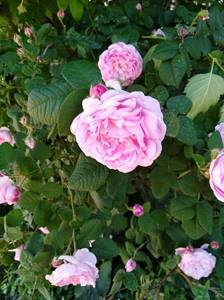
Seedlings one to two years old are well suited for planting. Before you begin the planting process, you need to dig up the soil in the area reserved for rose hips. And also fertilize it with a bucket of humus, 40 g of superphosphate and 20 g of potassium salt per 1 square meter. m. In order to plant a seedling you should:
- dig a hole measuring 40x40 cm;
- check the roots for damage; if there is any, remove them;
- straightening the roots, carefully place the seedling in the hole;
- sprinkle with fertile soil, gradually compacting;
- water;
- mulch with humus, peat bog or rotted sawdust.
Young bushes need regular watering, loosening the soil and protection from weeds.
Where does rosehip grow?
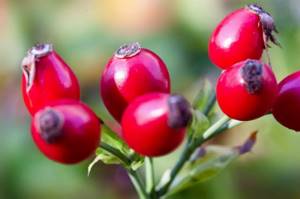
There are many types of rose hips found in nature. The natural habitat is regions with subtropical and temperate climates. Sometimes some species of shrub are found in tropical areas.
Prefers madder and pine undergrowth, edges of deciduous, coniferous and coniferous-deciduous forests, banks of rivers and lakes, pastures and pastures with high soil moisture, clay and rocky shores and plains.
Tips for caring for rose hips
In order for the rosehip to fully develop and bear fruit, it must be provided with the necessary conditions for this. Care should include watering, loosening the soil, pruning, and preparing for wintering.
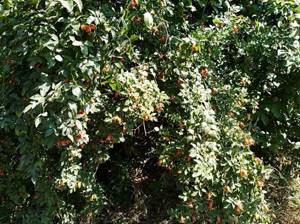
Optimal watering
Rosehip is easily adaptable and tolerates drought, so it does not need frequent watering. In addition, its long roots can reach underground water. In hot weather, Wild Rose is watered 3-4 times throughout the season. At the same time, 2-3 buckets of water are used for watering young bushes, and 5 buckets for fruit-bearing bushes.
Loosening the soil
Loosening the soil is an important part of rosehip care. Thanks to this procedure, the soil better allows air to pass to the root system, which saturates it with oxygen. Loosening helps the soil retain moisture for a longer period of time, improves and helps restore the soil structure.
Bush formation - pruning
Pruning is necessary in order to give the bush the correct shape, remove dried, damaged stems, and rejuvenate the plant. It is recommended to carry out the procedure in the spring before the buds open. Pruning done in the fall may result in the rosehip not surviving the winter. This happens if the areas injured after pruning do not have time to heal and the bushes to get stronger before the cold weather arrives.
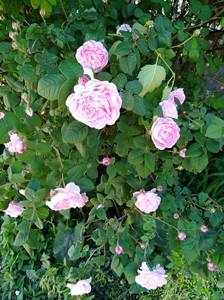
The first pruning is carried out immediately after planting the Wild Rose. All stems are removed from the seedling, leaving only shoots 10 cm high above the ground. Thanks to this pruning, the plant will bush better. Then, every three years, rejuvenating pruning of the rose hips is carried out. At the same time, the crown is thinned out and formed. It is recommended to leave 15 strong, healthy shoots. All damaged, dry and stems older than seven years should be removed so that they do not take away the substances necessary for the development of young shoots and good fruitfulness. It is important to carry out pruning with a pointed, disinfected tool. The most suitable option is pruning shears with long handles, which are easier to handle inaccessible areas.
Preparing for winter
Rosehip is a frost-resistant crop, so it does not need shelter for the winter. The exception is young bushes. At the base it is necessary to wrap them with straw, peat bog, leaves or sawdust. The bush is covered with non-woven covering material or burlap.
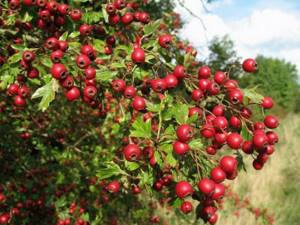
Properties of rosehip: harm and benefit
Useful properties of rose hips

More types of rose hips have a lot of vitamin C in their fruits. Lemons have 50 times less of this vitamin, black currants have 10 times less, and fir, spruce, juniper and pine needles have 60–70 times less compared to with rose hips. Begger's rose hips are leaders in vitamin C content. These fruits also contain vitamins B1, B2, B6, E, K, PP, carotene, tannins and coloring substances, malic and citric acids, sugars, phytoncides, essential oils, as well as potassium , magnesium, phosphorus, iron, calcium, copper, chromium, cobalt, molybdenum and manganese. The composition of the flowers of this plant includes essential oil, organic acids, glycosides (bitters and saponins), sugars, fatty oils, flavonoids, tannins, wax, ascorbic acid, anthocyanins (peonidin, cyanidin, peonin). The leader in essential oil content are the petals of the rugosa rosehip.
Rosehip oil has an antibacterial, anti-inflammatory and firming effect. It activates regeneration processes in injured tissues and mucous membranes. In this regard, it is widely used for cracks, dermatoses, trophic ulcers and abrasions. In addition to vitamin C, the foliage contains catechins, flavonoids, tannins, phenol carbonic acids and their derivatives. Essential oil was found in the foliage of the blood-red rosehip, and the composition of the leaf blades of the May rosehip includes polysaccharides and carotenoids. The branches contain saponins, catechins, vitamin P, flavonoids, the bark contains sorbitol, the roots contain tannins, catechins, flavonoids, triterpenoids.
The fruits help improve metabolic processes in the body and cleanse the circulatory system. They are recommended for use in cases of anemia, scurvy and diseases of the kidneys, liver and bladder. They are used as a tonic, general strengthening agent, enhancing the body's resistance to infectious diseases and weakening the development of atherosclerosis. To prepare it, you need to combine half a liter of water and 2 large spoons of crushed fruits. The mixture is allowed to simmer for a quarter of an hour over low heat. Then the broth is well wrapped and in this form it should stand all night; in the morning it is filtered. Drink throughout the day instead of tea, mixing with honey.
A decoction prepared from fruits and roots has a multivitamin, choleretic and mild diuretic effect, and it can also lower blood pressure. It helps improve appetite and the production of red blood cells, and also strengthens the walls of blood vessels. The juice helps normalize the functioning of the kidneys, liver and stomach, improves resistance to infections, helps activate metabolic processes and stimulate sexual activity, cleanses the body of toxins, normalizes blood circulation, improves memory, and eliminates pain in the head. Juice is a powerful antioxidant, and it also helps to quickly quench thirst.
"Live healthy!" Rose hips - beneficial properties.
Harm
People with high blood pressure should not use alcohol tincture of rosehip. At the same time, the use of water infusions of rose hips is contraindicated for hypotensive patients. People with blood circulation disorders should not take rose hips.
If products made from rosehip are used for a very long time, this will negatively affect the condition of the liver, because they help inhibit the secretion of bile. The decoction is contraindicated for chronic constipation. All products made from this plant are prohibited for use by people prone to blood clots. Heart patients also need to be careful; with endocarditis and other diseases, such drugs taken in large quantities contribute to the development of complications. If you have dermatological problems, you should consult your doctor before consuming rose hips.
Reproduction methods
There are several ways to grow Wild Rose. It could be:
- seed propagation;
- cuttings;
- propagation by seedlings;
- propagation using root suckers;
- dividing the bush.
Growing from seeds
Growing rose hips by seed at home, although a simple method, is quite lengthy. To ensure high germination, seeds must be used from unripe fruits. For spring planting, seed is prepared after harvest. Seeds must be stratified. To do this, wild rose seeds are removed from the fruit and mixed with moistened coarse river sand or a mixture of 4 parts sand and 1 part peat. The container with the seeds is placed in the basement until spring. Future seedlings are stored at an air temperature of 2-3 degrees. They need to be stirred periodically.
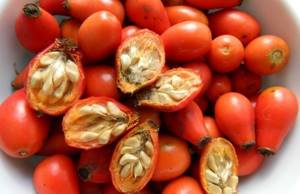
When planting in autumn, the seeds are sown in open soil in October. For this, beds are made so that there is a distance of 10-15 cm between them. Then they are mulched with sawdust or humus. In order for the sprouts to germinate faster, it is recommended to cover the sown seeds with film at the beginning of spring. The greenhouse should be ventilated regularly. When the weather warms up, the film needs to be removed. To get a healthy plant with healing properties, it is important to study information on how to grow rosehip from seed before planting.
Propagation by cuttings
Cuttings can be considered the most used and effective methods. It is held at the end of June or beginning of July. Cuttings are taken from the tops of green, semi-lignified stems. Each petiole should have three buds. The lower cut is made obliquely, at an angle of 45 degrees, under the bud. The top is cut straight above the bud. The lower leaves on the cuttings should be removed, the upper ones should be cut in half. For rooting, it is necessary to prepare the substrate by mixing three parts of river sand and one part of peat bog. Then the cuttings are placed in the prepared soil mixture and covered with film, regularly watered and sprayed. After 25-30 days they should take root, after which it is necessary to reduce the amount of watering. When new leaves or growths appear, you need to start staking the seedlings. To do this, the film is opened for several hours, increasing the time every day. Petioles are planted in a permanent place of growth in October-November. It is better to replant them with a clod of earth, deepening the grafting site 4-5 cm into the ground.

Reproduction by root suckers
One of the fastest ways to preserve the varietal qualities of rose hips. For propagation, healthy, strong bushes are used that give a good harvest. The most optimal time for the procedure is in the fall - October, in the spring - March. In this case, it is important that the soil warms up well, and in the autumn, that rooting occurs before the onset of frost. Young shoots 30-40 cm high are selected. Furrows are made 10 cm deep into which the shoots are laid. They should be pinched and sprinkled with fertile soil. Layers need to be regularly watered and hilled, due to which roots are formed. A year later in the fall, the young plant is separated from the mother bush and pruned so that the height of the stems is 15 cm. In the spring, the bushes are transplanted to a place of permanent growth.
HOW TO PLANT AND GROW ROSE HIP CORRECTLY
Any novice gardener can grow rose hips on their own plot. This shrub is so unpretentious that it requires virtually no care.
When planting, you should remember that rose hips are a cross-pollinated crop. Therefore, you need to plant at least two (or better yet, three) plants. You can choose one variety, since rose hips are very well pollinated by insects.
Plant rose hips in a well-lit, sunny place. It is absolutely not demanding on soils, but does not tolerate acidic ones. On them it will grow very slowly and constantly hurt. Slightly acidic (up to pH 6.0) - tolerated normally.
Rose hips are not suitable for close proximity to groundwater, since their root system grows up to 5 m deep. Therefore, in the lowlands, plants need to be planted in flower beds up to 80 cm high.
Since rosehip bushes are powerful and spreading, the distance between them should be at least 1.5 m for single plantings. In the case of creating hedges, it is reduced to 80 cm.
Planting holes are dug with a depth and a diameter of 60 cm. A 10 cm layer of broken brick or crushed stone drainage must be laid at the bottom. The holes are filled with a soil mixture made up of a fertile layer, compost (or rotted manure), sand and leaf soil in equal proportions.
Add 2 tablespoons of double superphosphate, one spoon of potassium sulfate and a liter jar of wood ash to each hole. Acidic soils are neutralized with dolomite flour three weeks before planting.
The planted bushes are watered abundantly (3 watering cans for each) to thoroughly wet the entire root layer. The ground under the bushes is mulched with straw or sawdust in a layer of 5 cm.
Rose hips can be planted in spring, summer and autumn. His survival rate is one hundred percent. In the first two years, fertilize only once in the spring - with a urea solution (two teaspoons per 10 liters of water for one plant). Rose hips need nitrogen for rapid growth. The rest of the food received during planting will last him for several years.
In subsequent years, they add June feeding with slurry and autumn (September) fertilizing with a ready-made mineral complex for fertilizing fruit bushes with a predominance of potassium-phosphorus nutrition.
Immediately after spring planting, all stems of the plant are cut to a height of 10 cm, so that over the summer new branches will grow and the bushes will begin to branch. This should not be done in the fall, since a plant that has not yet taken root may die after pruning. This operation is left until spring.
The formation of bushes begins 3 years after planting to give them the desired shape. This work is carried out in early spring before the start of sap flow. Cut out all damaged and dried branches, as well as those that protrude beyond the general contour of the bush.
In hedges, the front branches are cut shorter, giving them an absolutely even shape, so that they look like a complete row, from which no branches protrude.
Rose hips are not covered for the winter, as they have increased frost resistance (up to – 48 degrees).
With proper care, rosehip fruiting will begin in the 3rd year after planting.
We told you how to grow rose hips and highly recommend that you plant the wrinkled rose, which you can purchase from us.
This is truly the most wonderful variety of rose hips, which in its beauty is absolutely not inferior to frost-resistant park roses!
Harvesting and storing rose hips
The Wild Rose harvest occurs between August and October. Rose hips are harvested in several stages, as the fruits ripen one by one. The orange-red or red color indicates that the fruit is ripe and can be picked. When picking berries, you do not need to tear off the stalks and calyxes. In order for the fruits to be stored for a long time, they should be well dried and placed in a fabric bag. The rosehip will definitely thank you for your good care. It will delight you with its beautiful flowers and provide fruits with vitamins so necessary for the human body.
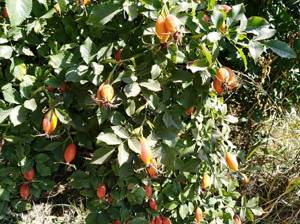
Article Rating
Rosehip hedge - care features
Although rosehip is a very unpretentious shrub, if you regularly give it a little attention, it will delight you with its lushness and luxurious appearance. The main points of care are watering, pruning and fertilizing.
Watering the rose hips
During the first two to three years after planting, special attention should be paid to watering. Each bush needs to be given a sufficient amount of water a couple of times a week. You will need to pour about a bucket of water under each bush. It is especially important not to forget to water the plants on hot days.
The soil around the bushes needs to be loosened twice a summer. Weeds around young plants should be removed regularly. In the future, after the rose hips take root and grow, watering and loosening can be reduced.
Pruning rules
To ensure that your hedge always looks neat, rosehip bushes need to be trimmed annually. Pruning is carried out in the fall, when all the foliage has fallen off.
Haircutting should begin with diseased, dry and broken shoots. Next, excess branches that grow too densely are removed. And only after this can you begin to give the bush a certain shape.
Any haircut is suitable for dog rose hips. May rosehip hedges are shaped into a rectangle or trapezoid.
How can you use rose hips?
And now, you have gone through all the stages, done painstaking work, and you have a healing source of vitamins, but the question probably arises - how to use this goodness so that it is tasty and healthy? There are many options, surely everyone can find something for themselves. From dried rose hips you can prepare:
- herbal tea;
- compote;
- jam;
- jelly;
- tincture;
- useful decoction for skin and hair.
But no matter how you use the dried product, you need to wash it thoroughly before using it. And after preparing any drink, you must pass the liquid through a sieve or a homemade filter consisting of three layers of gauze. This action will filter out unnecessary rosehip particles.
Let's look at the most delicious and healthy options for using dried rose hips:
Decoction
To prepare a pleasant and life-giving drink, you need to pour boiling water (about a liter or one and a half) into a handful of berries and cook over low heat for about fifteen minutes. After this, you need to let the drink cool and you can drink it. If desired, you can add honey and sugar.
Video: how to brew rose hips correctly.
Kissel
Another tasty option for using dried rose hips is jelly. It’s easy and simple to prepare: pour about 100 grams of berries with two liters of water, boil over low heat for about fifteen minutes. Then carefully strain the liquid, add one glass of sugar, and pour in 50 grams of starch, previously diluted in cool water, and bring the mixture to a boil. If desired, you can add a few slices of lemon.

Decoction in a thermos
A more gentle method of brewing berries, which allows you to preserve more nutrients than the first option. To make the drink, you must first grind three tablespoons of rose hips and pour them with a liter of boiling water. It is best to infuse in a thermos from night to morning.
Video: preparing a decoction in a thermos.
Decoction in a water bath
You can prepare a rosehip decoction as follows: 2 tbsp. l. crushed berries are poured with 2 glasses of hot water (but it should not be boiling!), after which you need to place the liquid with the berries in a water bath for 15 minutes. Drink the decoction strained and cooled.

Preparing rose hips for the winter is not so difficult, but there are so many benefits, benefits and pleasure! By following all the rules for collecting, drying and storing, you can use delicious berry-based drinks to replenish the balance of strength, strengthen the body and increase immunity without expensive medications and vitamins.
Proper care is the key to a rich harvest
For any gardener, caring for rose hips will be a joy, because this plant is truly very beautiful. The first time after planting, the shrub will need timely watering, especially during periods of prolonged absence of rain. Water consumption for an adult, fruit-bearing bush is up to 50 liters, for a young bush up to 30 liters is enough.
Important! Particular attention should be paid to feeding young shrubs; this will require organic and mineral fertilizers.

Feeding is carried out at least three times a year. In the spring, when the plant begins to wake up from hibernation and actively grow, nitrogen fertilizers are applied; they are also applied in the summer, during the period of formation of new shoots and fruiting. In the autumn, the bush is fertilized with phosphorus and potassium fertilizers, this is done after harvesting the fruits. It is useful to fertilize rose hips with bird droppings or slurry of manure, previously diluted with water.
Important! Mineral fertilizers are applied to a shallow depth into the soil, by loosening, and scattered over the entire crown of the bush.
Pruning, forming the crown of a bush
The process of forming a shrub consists of pruning root suckers and basal shoots. Pruning will increase the amount of harvest and maintain the original characteristics of the fruit.
Fact! A five-year-old plant should have no more than 10 of the strongest branches of different ages, which will be correctly located in space!
It is better to perform pruning in the autumn, after harvesting, or in early spring, before the first buds bloom. The first stage of shrub formation is carried out during the period of planting the seedling in the soil, when all excess branches are cut off, leaving small stumps. After two years, you will need to prune again, remove weak branches and root shoots that have managed to grow away from the main shrub. The remaining branches need to be cut to approximately 15-20 cm, the shoots that grow from them to 70 centimeters are pinched at the top, thus stimulating branching.
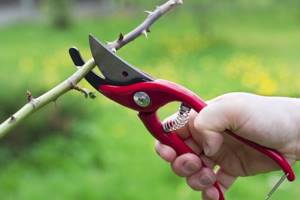
An adult plant with branches 5-7 years old loses its high fruiting quality, its annual growth decreases, and the amount of flower bud formation decreases. To increase productivity, old branches need to be cut to the ground, leaving young, stronger shoots instead. To enhance branching and fruiting, these shoots are pruned; they should not exceed 70 centimeters in length.
Rose hips are shrubs that require annual sanitary pruning, when underdeveloped, weak shoots are removed, including branches that are diseased, incorrectly positioned, twisted or broken. Shoots exceeding two meters in length are shortened by 40 centimeters.
If you want to have a beautifully flowering bush in the form of a rosehip on your site, if you want it to delight you with lush flowers and medicinal fruits every year, surround the plant with care, provide the necessary care, and it will definitely thank you!
Rosehip - cultivation and care
The rose hip, a close relative of the garden rose, is not only a beautiful bush covered with fragrant flowers, but also a source of medicinal fruits. Rose hips contain much more vitamin C than apples and lemons. And its sharp thorns will help you make a beautiful and impenetrable living fence near your site. Whatever one may say, it is difficult to find a more useful plant for your garden.
Planting rose hips
Rosehip loves illuminated areas where there is a lot of sunlight. It will grow best in elevated areas with fertile soil, in which there is no stagnation of groundwater. Rosehip roots go very deep into the ground, so do not plant it in marshy or low-lying soil - it will quickly wither and die. In terms of the growth of the root system, rose hips are similar to raspberries: after several years of the plant’s life, its roots grow in the upper layers of the soil and begin to occupy large areas. To prevent it from spreading, you need to fence the bushes with a small ditch 20-30 cm deep or dig in pieces of slate to the same depth.
Rose hips can be planted along the border of a personal plot (to protect it) or as separate bushes in the most inconvenient places: near a compost heap or next to an outbuilding. The main thing to remember is this: rosehip is a cross-pollinated plant, so its bushes should be located next to each other. This is important if you plan to plant rose hips not as an ornamental plant, but to collect its useful fruits. Rose hips can be propagated by seeds, seedlings, and root cuttings.
Propagation by seeds
It is advisable to collect seeds for planting in August, from unripe brown fruits. At this time, the seed shell has not yet hardened, so they will germinate better. The seeds themselves can be planted both in spring and autumn, but it is better in the autumn. We do autumn planting in October; we sow the seeds in the ground in rows. Sprinkle the rows with planted seeds with humus and sawdust, leaving a small gap between them so that a hoe or cultivator can pass freely. In early spring, so that the seeds germinate better, we install a frame with plastic film stretched over it. When the first two leaves appear on the seedlings, they can be planted.
If you want to plant in the spring, you need to create good conditions for germination in advance - stratify the seeds. To do this, after extracting the seeds from the fruits, mix them with a mixture of peat and sand (in a ratio of 1:4) or with river sand. Then we put this mixture in a box and place it in a cool place with a temperature of 2-3 ºС until spring. During winter, the mixture must be stirred periodically.
Propagation by seedlings
Rosehip seedlings will take root best when planted in the fall. It is advisable to plant them in October-November. We make a hole for planting with a depth of 20-22 cm. If the soil at the planting site is acidic, we additionally apply lime fertilizers, and also add compost and rotted manure. Before planting, we cut the seedlings short so that the thick branches are no more than 8-10 cm long. For better survival, root cuts can be made. To do this, we shorten the roots to 15-20 cm. Then we immerse the roots of the seedling in a clay mash and plant it, after straightening the roots, in the prepared hole. The neck of the seedling's rhizome should be 5-8 cm below the soil surface. After planting, water the seedling with water and sprinkle the surface with sawdust or peat.
The distance between planted plants depends on the purpose for which we plant rose hips. To make a hedge, we plant seedlings at a distance of 50 cm from each other. For a good harvest, the rosehip bush will need more space.
Reproduction by root suckers
If you need to preserve the characteristics of the mother bush, another method of propagation will come in handy - by root suckers. They must be harvested from the healthiest and most productive bushes, in late autumn or early spring. This is usually done in two ways. In the first option, a shoot 25-40 cm high is selected and separated from the mother bush with a shovel. This can be done in both autumn and spring. Using the second method, the adventitious bush is not separated, but periodically hilled up and watered. Due to this treatment, adventitious roots begin to form in the offspring bush. The next year, in the fall, the bush is separated from the mother plant, but not replanted, but left in place until spring. In the spring it is transplanted to a new place, taking care not to damage the rhizomes of the seedling.
Rose hip care
Rosehip pruning
It is necessary to thin out the rosehip bush 2-3 years after planting it. At the same time, for better yield, it is necessary to form a bush of 15-20 branches. It is good if the branches of the bush are of different ages, but not older than 7 years - old branches do not bear fruit well. Pruning of old and weak branches should be done in the spring. Many manuals recommend pruning in the fall, after the leaves fall, but this is exactly what you shouldn’t do. Rosehip cuts do not tolerate frost well, so spring pruning is much more useful, especially in regions with harsh winters. The main thing is not to turn pruning into shortening the bush - next year you will get a large amount of young growth that will not bring you a harvest.
How to plant rose hips in open ground
Many summer residents claim that rosehip is a shrub that does not require special care. This opinion is only true if you want to have an exclusively ornamental plant on your territory that will protect other trees and bushes from bad weather and delight you with beautiful flowers in the spring.
But in order for the bush to be truly beautiful, bright, lush, and bring a rich harvest, you will have to work a little. In early spring or early autumn, planting is carried out in open ground; in summer, the shrub requires regular feeding with fertilizers, watering in hot weather, protection from pests and diseases, and pruning of fruit-bearing branches in the fall.
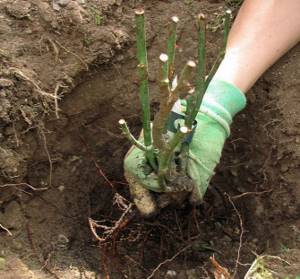
There will be enough worries from early spring to late autumn, so those who want to improve their plot with a valuable plant will have to stock up on patience, shovels, hoes and information about caring for rose hips. Next year, it will definitely thank you with bright flowering and a generous harvest of medicinal fruits.
Choosing a place for the bush
Rosehip loves warm, gentle sunlight, so the planting site should be sunny. Since the rose hip bush grows quickly, you need to plant it away from other plants and bushes so that they do not soon become clogged with bush growth. But it is best to isolate its root system in order to avoid the bush from growing throughout the entire territory. For these purposes, a sheet of slate or iron is buried in the ground at a certain depth (20-30 cm) around the rosehip roots. It is also undesirable to plant the bush in places where there is standing groundwater.
Important! The most suitable place for planting a bush is an elevated, sunny area with fertile soil in which groundwater does not stagnate.
Lowland and swampy soil is not suitable for rose hips; it will not be able to take root in it and will soon wither and dry out.
Seeds or seedlings - which is better?
Rose hips are planted in open ground in early spring or autumn. Many gardeners are interested in what material is better to use for planting shrubs: seeds or seedlings?
Before answering the question, it is worth saying that propagation of the plant is possible both by seeds and seedlings, even by root cuttings.

Planting seedlings
Thorny bush seedlings, like any other plant, are best planted in autumn. Planting and caring for rosehip seedlings in the fall is a very important stage; in order for them to take root in the soil, you need to make a lot of effort, the main thing is to create optimal conditions for them.
Seedlings are planted in October or November. To do this, you need to prepare the place for planting and the seedlings themselves:
- dig a hole about 22 centimeters deep;
- if the soil on the site is acidic, apply lime fertilizers to improve its qualities, do not forget to add rotted manure and compost;
- cut the seedlings as short as possible (the length of thick branches should not exceed 10 centimeters);
- make root cuts on the seedlings (cut the roots by approximately 20 centimeters).
When the soil, planting site and seedlings are ready, you can begin planting. Make a clay mash and immerse the roots of the prepared seedlings in it, then immerse them in this form in a dug hole, cover them with fertile soil not mixed with fertilizer. Next, water the seedling generously, sprinkle the soil with peat, sawdust and mulch.
Attention! Seedlings are planted in early spring, before the first buds appear.
Types and varieties of rose hips
Nowadays, there are more than 250 different types of rose hips. Below we list the most popular varieties of this wonderful plant in our area. Some of them will delight you with both appearance and fruits, others are purely decorative.
You can choose rosehip seedlings on our market, where products from various online stores are presented.
Rosehip cinnamon
It grows in Siberia, bushes of this variety grow up to 2 m. The shrub received its name for the peculiar red-brown color of the bark. From one bush you can collect up to 2 kg of fruit.
Rosehip cinnamon. Photo from emedicalhealth.ru
Rosehip wrinkled
This variety has been cultivated for a long time. The plant is densely strewn with thorns, but up to 4 kg of fruit can be collected from one bush. It blooms almost all spring and summer and is not afraid of disease and frost.
Rosehip wrinkled, flowers. Photo from the site klubrasteniy.ru
Rosehip needle
This variety takes root well in the North; it grows in Central Asia and the Non-Black Earth Region. The bush is abundantly strewn with short thorns. Flowers pink or red. It tolerates winter frosts and summer drought well.
Rosehip needle. Photo from activeclub.com.ua
Terry prickly rosehip (white rosehip)
Decorative type of rosehip with very beautiful, thick, white, double flowers.
Double thorny rosehip. Photo from the site posadka-dereva.ru
Rosehip gray
A type of rosehip with simple star-shaped flowers of light pink color, 3-3.5 cm in diameter, dark foliage of a beetroot and bluish hue. The shoots are dark beet color.
Gray rosehip. Photo from vosledoma.com
The abundant bright red fruits are inedible, but very decorative.
Rosehip Large-fruited VNIVI
This variety is good for its fruits, the weight of which reaches 11-13 g. The branches are distinguished by their strong growth, when flowering they look very attractive, the petals of the flowers are pale pink. The disadvantage of this variety is the large number of thorns.
Rosehip Large-fruited VNIVI. Photo from vosledoma.com
In addition to these species, we often plant such varieties as 'Vorontsovsky-3', 'Rosa Webb', 'Rosa Daurskaya', 'Late-ripening', 'Yubileiny'. They all look great when they bloom, and from the fruits collected in late summer and autumn, you can make healthy vitamin compotes and delicious jam. If you are in doubt whether you should plant rose hips on your property, remember its beneficial qualities and its beauty - and the answer will be obvious!
Do you need to feed rose hips?
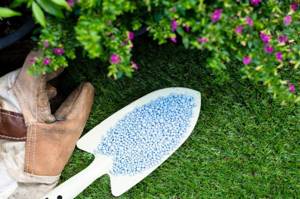
Rosehip is an unpretentious plant. However, even he will not refuse feeding. You need to start adding them from the second year of life.
During the season, to speed up the growth of the bush, feed it twice with nitrogen fertilizers. Apply them the first time in early spring, the second time in the summer, during the period of active growth of shoots (June-July).
Subsequently, from the fourth year of life, add about 3-5 kg of compost to each bush every three years. After each fertilizing, to avoid crusting, loosen the soil and add a layer of mulch. This will ensure oxygen access to the roots and retain moisture in the soil.
How to care for rose hips so that they become the pride of the site
There are at least 10 thousand decorative varieties of rose hips. Probably everyone can choose a variety to their taste. And we will tell you how to grow a rosehip bush in the garden, what you need to do for this and what to avoid.
Do you need a shrub for a hedge? Pay attention to the rose hips. It not only has beautiful flowers, but its spines will easily protect your area from uninvited guests. If you are looking for a plant with beneficial properties, we again recommend thinking about rose hips. Its fruits contain 50 times more vitamin C than the notorious lemon. Or maybe you are now looking for a fragrant bush that also blooms beautifully? Well what can I say? In this case, rose hips will suit you too. Not a plant, but just a godsend for a gardener!
When to prune rose hips
Starting from the third year, gardeners prune well-rooted rose hips all year round. Even if something goes wrong, you can cut the entire bush to the ground. It will quickly recover due to growth and again provide an opportunity to experiment. If you are pursuing the goal of getting a good harvest of berries, then formation should be carried out while the plant is sleeping, i.e. from late autumn to early spring . But sanitary pruning is needed as needed.
Shoots damaged by hail, pests and diseases must be removed immediately. This way, foci of infection will be eliminated, and the bush will have more strength to grow and ripen healthy branches.
Pruning in autumn
In autumn, it is not recommended to carry out formative pruning (shortening or cutting out strong but unnecessary shoots). The fact is that during the winter the bush can be damaged by frost, wind, and heavy snow. Therefore, in the fall you should limit yourself to sanitary pruning, removing small shoots in the lower part of the bush, as well as those branches that will be removed in any case: crooked, broken, growing deep and downward, dry and diseased .
It is better to postpone pruning old rosehip branches until spring. If many young immature shoots die in winter, the old woody ones will be saved. In the spring we cut them, but not at ground level, but into a stump with two buds. Over the summer, strong stems will grow in this place, which will yield a harvest the following year.
Pruning in spring
Summer is ahead, so spring pruning is the most important. The plant awakens and immediately directs all the juices to growth. Young branches will grow over the summer, ripen and survive the winter well. First of all, we cut off all the frozen tops and broken shoots. Then we carry out formative pruning and thinning .
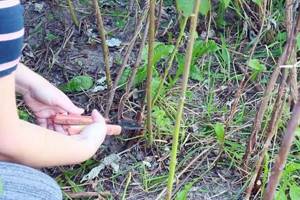
In spring, old branches with cracked bark are clearly visible
How to dry and harvest rose hips
Before you start drying, you need to carefully inspect the berries, choose bad ones, damaged ones, or those affected by disease. There are two main methods of drying - cold and hot, and you can also freeze.

Natural drying (cold method)
A very convenient and simple way of drying rose hips for the winter, which allows you to preserve the beneficial properties of the vitamin berries as much as possible, so this method of harvesting is preferable.
For natural drying, you must have a well-ventilated, dark, dry room without exposure to sunlight. To properly dry rose hips for the winter using this method, it should be placed in a thin layer on a hard surface, having previously placed material, for example, clean burlap, cardboard, or plywood.
After this, it is necessary to stir occasionally to avoid mold or caking. Rose hips should be dried under such conditions until they become hard and dry. As a rule, berries are dried in two or three weeks; the period is affected by the temperature conditions of the room.

Thermal drying (hot method)
It is not always possible to dry berries naturally. In this case, the hot method comes to the rescue, allowing you to dry the rose hips in the oven (both gas and electric). Of course, oven drying may not retain as many benefits as cold drying, but it can be a great alternative for those who do not have a suitable space (for example, apartment dwellers).
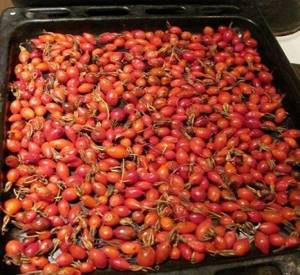
To properly dry rose hips in the oven, you need to:
- place the berries on a baking sheet in one layer;
- place the baking sheet in the oven at a temperature of 40-60 degrees (it is not recommended to preheat the oven in advance);
- when drying in the oven, the berries must be stirred constantly and dried for about 7 or 8 hours;
- In order for moisture to evaporate, it is necessary to keep the oven door slightly open; if there is convection in the oven, it is turned on during the process;
- Upon completion of hot drying, it is necessary to let the raw materials lie at room temperature for several days.
You can determine the readiness of the berries by their rich color, and the peel should also be springy.
Important! You cannot overdry the berries, otherwise they will lose all their beneficial properties and will crumble.
Freezing
Freezing is also an excellent option for storing healthy berries. It allows you to preserve the healing properties of the product. You can store the berries either whole or in grated form. Berries should be placed in the freezer in a plastic container or bag. It is recommended to store berries in their whole form for up to a year, and in puree form for up to 8-10 months. Before storing in the freezer, berries should be rinsed under running water and allowed to dry completely.

When to collect rose hips: optimal timing
It is important to observe the optimal timing for collecting rose hips for subsequent drying, storage and consumption. The quality of the berries, their composition and the benefits that they can give to a person after drying will depend on this.
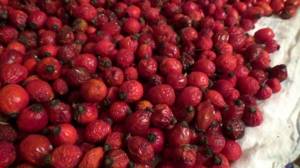
There are general recommendations for the timing of the rose hip harvest:
- The fruits of the bush should be collected when they are fully ripe; at this time the plant contains the greatest amount of useful substances.
- You can tell that it is time to harvest rosehips by the protruding sepals. Also, ripe fruits are red or bright orange in color and are firm to the touch.
- Do not delay or delay collection, because over time the amount of sugar will increase and the amount of vitamin C will decrease.
- It is recommended to collect before the first frost.
- Ripening times vary in different regions. For example, in the central zone (Moscow region), Leningrad region and Ukraine, the optimal collection period is from August to October.
Video: when to collect rose hips and its beneficial properties
Watering rose hips
If you want your rose hips to please you with both flowers and fruits, do not forget about watering.
When caring for rose hips, follow the rule: “It’s better to underfill than overfill.”
This plant tolerates lack of rain quite easily. However, during dry and hot summers, it is still recommended to water it. For young bushes, 30 liters per plant will be enough, for adult bushes – about 50 liters. During the season you need to carry out 3-4 such waterings.
Rosehip pruning
How to prune rose hips correctly?
Pruning of the plant, as well as feeding it, begins only in the second year. Most gardeners advise pruning rose hips in early spring. Autumn pruning, especially in cold climates, can lead to the death of a weakened plant.
When pruning, you should completely remove:
- broken branches;
- diseased shoots;
- stems lying on the ground;
- branches thickening the bush;
- root shoots that you do not intend to use in the future for propagation.
Shoots older than 7 years produce very little fruit - they also need to be gotten rid of. This will contribute to the rapid growth of young fruiting branches.
When pruning, leave strong shoots of different ages. Try to keep branches that are the same distance from each other. Shorten them to 60-100 cm. This will stimulate the growth of lateral buds and branching of the bush. At the age of 5 years, the bush should have 15-20 powerful, healthy stems.
Is it worth planting rose hips on your site? We think so. This plant has many advantages. For example, a rose hip bush will help you decorate an unsightly building on your site. During flowering, it will fill everything around with a delicate aroma. Its fruits will strengthen your immune system and cure colds. And all this with minimal care.











